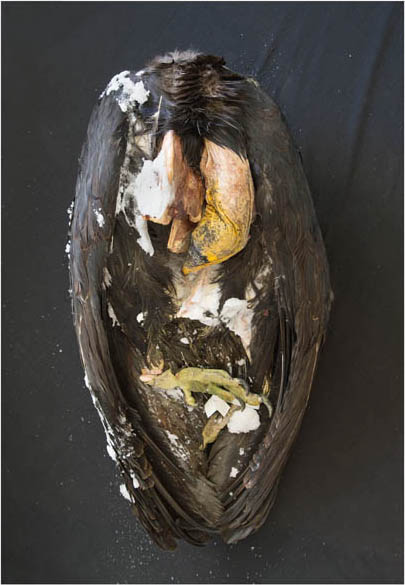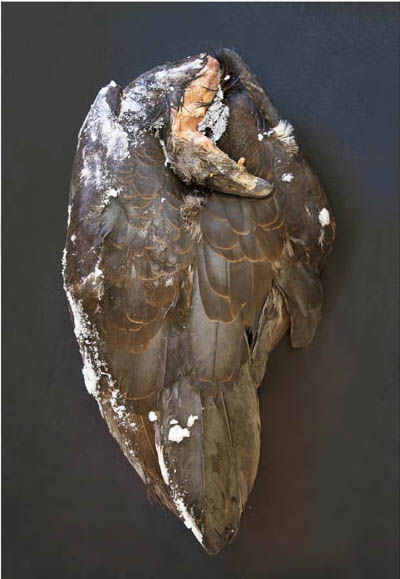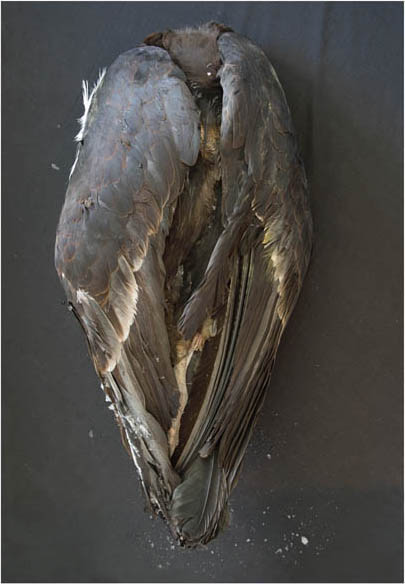3 x image-and-text works from the series of 14
248 She was hatched on 8th of May 2001 and released on 16th of February 2002. She was the last mate to 227. Condor 196 was 227’s first mate – she disappeared and the next season he paired with 248 and a year later we recovered her in late November in the Utah territory. We thought they would nest too – we had them displaying in the same remote canyon where we found 299 dead last week. 248 we recovered, dead of lead poisoning buried under snow on 15th of December 2006… she had a GPS transmitter. I remember that trip, 48 miles of snowmobiling to get to her…

232 This Condor died of lead poisoning on 3rd of January 2007. He was hatched on 30th of April 2000 and released on 25th of September in 2002. He spent over four years in the wild but did not reproduce. You know what hits me more than anything is not just the carcass – some of them you can recognize – I remember holding that bird – it had a really big head or whatever. What hits me the most is the relationship between how old the birds are when they die and the cause of death. So I look at a bird and see this is an adult – look it up on the charts and it died of lead poisoning… I find another bird – it’s only been out a year and didn’t die of lead poisoning. The longer they are out there, if they are going to die, they are going to die of lead poisoning and that gets me more than anything. But I notice things – like this one has green fecal material on its feet and that is a sign of stress on their system – sometimes related to the lead poisoning – not always – but it is related to stress. And I see a dead bird that has head coloration like that and it is obviously an adult – it just strikes me as such a loss because that bird could have been a breeder and a key to the success of this recovery is going to be adult survival. He was just beginning an adult life with the opportunity to produce. Depending on how long they live – they can live 60 years and are sexually reproducing at 8 years. That is a lot of babies – 20 plus potential so… You become hardened to it. It’s a shame but my way of dealing with the emotion of it is thinking well, what can I do on this bird and all these other birds’ behalf? This is why we are here, this is why we started – to recover the species so, are we doing due diligence on behalf of the process – the effort – the losses, to make sure we ameliorate the problem or at least identify and present it to society and see what they decide to do. Of course I will bust my ass to see that they will use less lead. Every bird in every part of the program is paying the true cost of recovery. So yeah, due diligence…

304 He was another lead death – the 304th condor tagged in the history of the condor recovery effort and yeah, he was hatched in our facility (the Peregrine Fund) in Boise Idaho on 24th of April 2003. He was released 20th of March 2004 and died two years later on March 16th 2006. Two years in the wild… and then died of lead poisoning.
